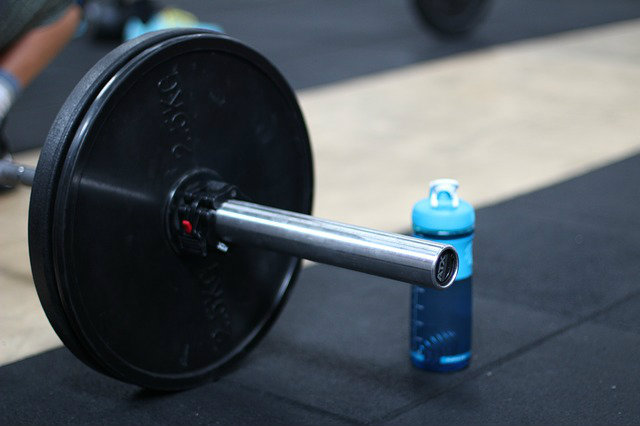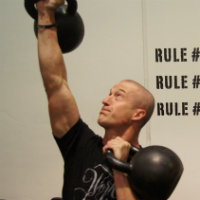 Reading Time: 5 minutes
Reading Time: 5 minutesIt’s easy to get derailed during the holiday season. Work accelerates because everyone is frantically trying to finish tasks before the end of the year, but this happens at a time when most people’s brains are already in vacation mode. With more work on your plate and everybody else moving at a slower pace, it’s easy for things like your training to take a back seat. Does that sound like how things went for you this year?
Before long, you become that guy or girl who gets to the end of the holidays and has to peel him- or herself off the couch. Your body is heavy and lazy thanks to a few weeks of overeating and not doing much. It would be great if you could just go back to where you were before your hiatus, but the body doesn’t work like that.
It’s going to take some time to climb to the peak of your fitness again. That’s the bit people always forget. Without exaggerating one bit, I saw one guy take two years to get back to where he was thanks to a lazy Christmas period and then hurting himself by going too hard too early when he came back.
So don’t be that guy. The holidays are done and whatever transpired can’t be changed. But you can take a more intelligent approach to diving back into your training and making fitness part of your routine again. Here are five guidelines for formulating your own post-holiday exercise plan of attack.
(Note: this approach also works well if you’re a beginner to exercise.)
1. Make Your First Workout Easy
My goal with clients who haven’t been in a while is to always make the first workout easy. I want the first workout to create zero muscle soreness. It’s far better to get back in the gym sooner and train again than it is to have a hard first workout that leaves a person so sore he or she can’t come back for a week.
I accomplish this by taking my client’s normal weights used and making him or her use 60-70% of that. At my facility, RPT, every single client records every single session in a training diary. That makes picking which weights to use very easy since we can go back in their diary and know exactly what they were using. The next step is to use 60-70% of the client’s old volume. So a workout that may have been 100kg for 5 x 5 now becomes 70kg for 5 x 2-3.
2. Make Your Conditioning Easy, Too
The first workouts back never involve hard conditioning tasks. For example, someone who may have been running for thirty minutes at a time three times per week may come back to a first week that has three runs of twenty minutes — but done as intervals of thirty seconds of running with thirty seconds of walking.
A session like this is enough to give my client a taste of what he or she had been doing but not enough to cause stiffness or soreness, or open the door to the possibility of injury. (Running, in particular, suffers from this with higher injury rates seen in runners who have taken a break or run less).
3. Ignore the Clock
Our final step in the gym is to remove any time targets for these returning workouts. We allow people to take longer rests than normal and encourage them not to push hard. In fact, it’s not unusual for people to not be able to finish what was routine only a short while earlier.
While it may seem counterintuitive to spare the rod with our returning clients, it means they’ll be able to come and train far more times in these early weeks than would otherwise be possible. These easy sessions build the body quickly and relatively painlessly so that harder training can start sooner rather than later.
4. Do Some Honest Math
I generally work on a “three easy sessions per month off” guideline before we start pushing our clients again. And yes, that can absolutely mean that we use this soft approach for two or more months, adding up to over twenty easy workouts, if the person in question has been off for a long time.
Do some honest math and see what that means for your training. How many months have you been away from regular exercise? Multiply that times three. That’s how many easy sessions you need to schedule. Trust that number.
5. Don’t Forget the Rest of Your Life
The final step, and one that is often missed, is to concentrate on what is happening outside the gym. Getting the body right is more a question of lifestyle than it is about the few short hours per week in the gym.
At my facility, we’ve been using my “8-7-4-3-2 formula” for some time with great success to show people the importance of lifestyle when it comes to maximizing their training. And after a sluggish and over-fed holiday period, this approach puts in perspective the fastest way to shed the pounds:
- 8 – The hours of sleep you need each night.
- 7 – Take daily walks for 30-60 minutes.
- 4 – The number of good meals you should eat each day.
- 3 – The number of cardio sessions to do each week for 30-90 minutes with a heart rate between 120-150bpm.
- 2 – Stretch twice as often as you lift weights.
It may seem odd, but I clearly don’t mention how often you should be in the gym doing strength training. That’s because I see more and more that the in-the-gym time is actually the easiest part of the equation for most people to get right. Turn up, work hard for an hour or so, and go home.
In contrast, the opportunity to do (or not do) the other stuff — like sleep, mobility, and nutrition — is presented to you 24/7 and, therefore, it is much harder to make consistently good choices about these aspects. In fact, if you look closely you’ll see the first three things — 8-7-4 — are all lifestyle factors and have nothing to do with “training.”
From Holiday Slugs to Year-Round Studs
We have a very good success rate in changing people back into studs after being holiday slugs. The combination of working on lifestyle factors and providing very moderate workouts in the short term sets you up well for long-term gains for the next year.








